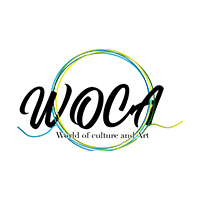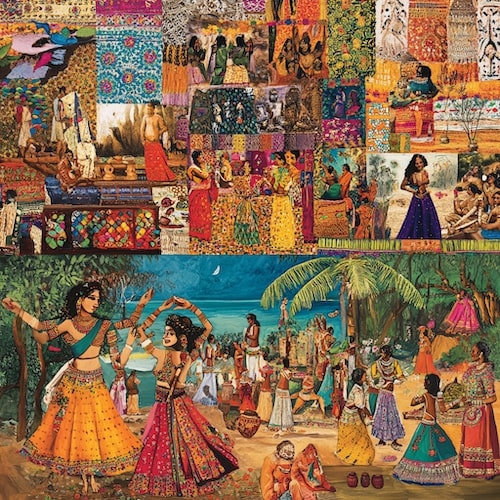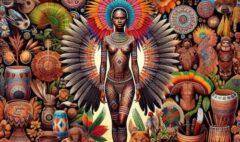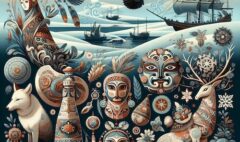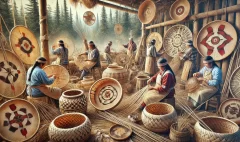Exploring the Indigenous Arts of India
India, a land of incredible diversity, is home to numerous indigenous communities, each with its own unique cultural heritage. The indigenous arts of India reflect this vast spectrum of traditions, beliefs, and practices, encompassing a wide array of artistic expressions. From intricate textiles and pottery to vibrant paintings and music, the indigenous arts are a vital part of India’s cultural fabric, providing insight into the lives and histories of its people.
The indigenous arts of India serve as a vital link between the past and present, preserving the heritage and identity of various communities. These art forms are not just about creating beautiful objects; they embody spiritual beliefs, communal practices, and the deep connection to the natural world. Each piece of art tells a story, whether it is through the patterns of a woven textile or the motifs painted on a wall.
Textiles: Weaving Stories
One of the most celebrated aspects of the indigenous arts of India is its textile tradition. Each region boasts its own unique weaving techniques and styles. For instance, the **Gond** community of Madhya Pradesh creates beautiful handwoven fabrics that incorporate traditional patterns and motifs reflecting their connection to nature. Similarly, the **Kutch** region is known for its intricate embroidery and mirror work, with artisans employing vibrant colors and designs that tell stories of their culture.
The indigenous arts of India in textile form are not just for clothing; they also include ritualistic garments, household items, and accessories. The craftsmanship involved in weaving and dyeing is often a communal activity, with techniques passed down from generation to generation. This aspect of indigenous arts fosters a sense of identity and continuity within communities, reinforcing their cultural heritage.
Pottery: Shaping Culture
Pottery is another significant aspect of the indigenous arts of India. Different communities employ unique methods and styles, often using locally available clay and materials. The **Kondh** and **Saura** tribes in Odisha, for example, produce distinctive earthenware that is not only functional but also decorated with intricate designs that reflect their worldview.
The indigenous arts of India in pottery often serve practical purposes, such as cooking and storage, but they also carry spiritual significance. Many pieces are created for rituals and ceremonies, imbued with meaning and purpose. The designs and motifs often have deep connections to the community’s myths, legends, and natural surroundings, creating a rich tapestry of cultural expression.
Painting: A Canvas of Tradition
Painting is another prominent form of the indigenous arts of India. Various tribes and communities have developed unique styles, such as **Warli** painting from Maharashtra and **Madhubani** painting from Bihar. Warli art, characterized by its simple geometric forms, represents daily life, nature, and spirituality, often depicted on mud walls of homes. In contrast, Madhubani paintings use vibrant colors and intricate patterns to narrate myths, folklore, and religious themes.
The indigenous arts of India in painting are often used to decorate homes and public spaces, making the art an integral part of daily life. These artworks are not just for decoration; they serve as a means of storytelling and preserving cultural narratives. The themes and styles vary widely, reflecting the diverse beliefs and practices of different communities.
Music and Dance: Rhythm of Life
Music and dance are essential components of the indigenous arts of India, serving as both entertainment and a means of cultural expression. Various indigenous communities have their own traditional instruments, songs, and dance forms that are integral to their rituals and celebrations. For instance, the **Gond** community is known for its vibrant folk songs that celebrate nature and community life, while the **Bihu** dance of Assam showcases the agricultural traditions of the region.
The indigenous arts of India in music and dance are often performed during festivals, weddings, and other communal gatherings. These performances foster a sense of belonging and community, allowing individuals to connect with their cultural roots. Music and dance are not only forms of entertainment but also serve as vital expressions of identity and resistance against cultural erasure.
Preservation and Challenges
While the indigenous arts of India are rich and diverse, they face several challenges in the modern world. Rapid urbanization, globalization, and the decline of traditional livelihoods threaten the survival of these art forms. Many artisans struggle to find markets for their crafts, and younger generations are increasingly moving away from traditional practices.
Efforts to preserve the indigenous arts of India are crucial. Various organizations and NGOs work tirelessly to support artisans by providing training, promoting fair trade practices, and facilitating access to markets. Additionally, cultural festivals and exhibitions help raise awareness and appreciation for these art forms, allowing indigenous artists to showcase their talents and connect with a broader audience.
Conclusion
The indigenous arts of India are a treasure trove of cultural expression, showcasing the diversity and richness of its communities. Through textiles, pottery, painting, and music, these art forms reflect the beliefs, traditions, and histories of the people who create them. The indigenous arts of India are not just a celebration of creativity; they are a testament to resilience and cultural continuity.
Engaging with and supporting these art forms is essential for preserving the unique identities of indigenous communities. By appreciating the indigenous arts of India, we honor the deep connections these artists have with their heritage and the natural world. In a rapidly changing society, these art forms remind us of the importance of cultural diversity and the stories that connect us all.
Related Posts
The Meditative Power of Ikebana: Finding Calm Through Flower Arranging
The Captivating World of New Zealand Indigenous Arts
Discovering the Indigenous Arts of Brazil
Discovering the Indigenous Arts of Russia
Weaving Wonders: The Beautiful Art of Indigenous Basket Making in Canada
Search
Latest Posts
Popular Tags
